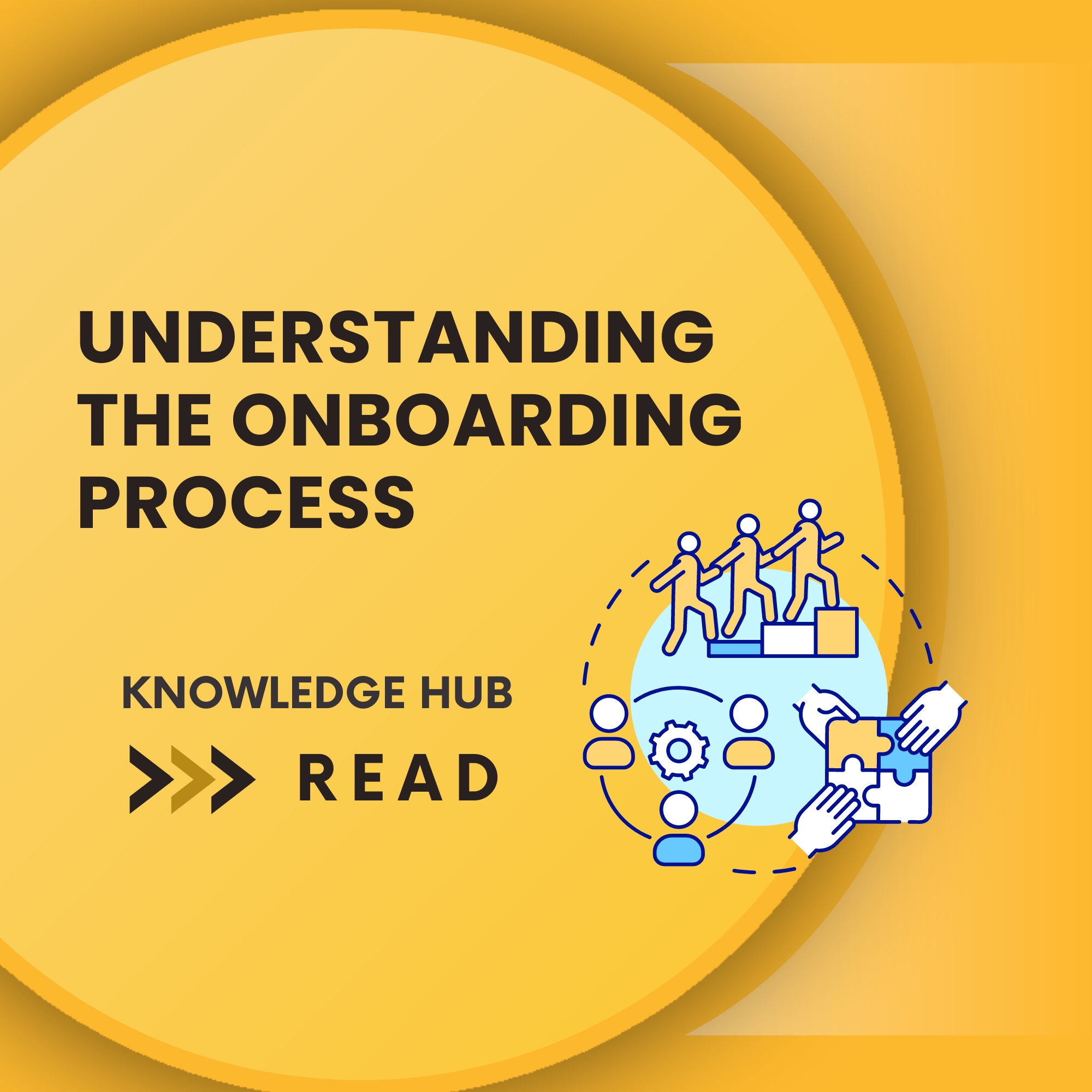Understanding the Onboarding Process: A Comprehensive Guide together with key aspects of preboarding, Crossboarding & reboarding
0.00 zł
Onboarding is a critical process for any organization that involves integrating new employees into the company. It marks the transition from a new hire to a valuable team member. While onboarding is a crucial phase, there are variations such as preboarding, crossboarding, and reboarding. Understanding these distinctions and their specific processes ensures a smooth transition for all employees.
Onboarding vs. Preboarding, Crossboarding, and Reboarding
- Onboarding: This is the conventional process that happens after a new hire starts. It includes orientation, training, and acclimating the new employee to the company culture and their specific role.
- Preboarding: That I the first step in the hiring process that occurs before the official start date. It involves activities such as filling out paperwork, receiving company materials, and beginning to learn about the company culture. Preboarding ensures employees feel welcomed even before their first day, reducing first-day jitters. It sends the message to future employees – We are awaiting you & guaranteeing employment.
- Crossboarding: This happens when existing employees move to a new role within the company. It involves transferring the employee’s experience and ensuring they acclimate well to their new duties and team.
- Reboarding: This process is for employees who are rejoining the company after a period of absence. It resembles onboarding but focuses more on updating them on new policies, systems, and any changes that have occurred.
The Importance of Preboarding
Preboarding is essential as it builds excitement and reduces stress before the first official working day. It involves sending welcome emails, company swag, or access to an online portal with resources. Proper preboarding helps the employee feel valued and prepared, which boosts their initial engagement and confidence.
Roles in Onboarding
- HR (Human Resources): HR is responsible for the administrative side, including paperwork, compliance training, and providing initial information about benefits and company policies. They also introduce initiatives entailing gaining knowledge about company’s culture, values, key stakeholders.
- Managers: Managers play a crucial role in setting clear expectations, providing job-specific training, and offering feedback. They also ensure that the new hire understands their role within the team’s context. They organize on the job trainings & job shadowing to guarantee successful transfer of knowledge
- Job shadowing involves new employees observing experienced colleagues as they perform tasks to gain firsthand insight into job responsibilities and company culture.
- On-the-job training immerses new hires in real work scenarios, allowing them to acquire job-specific skills and knowledge through hands-on practice with guidance from supervisors or colleagues.
- Team Members: The team is instrumental in welcoming the new hire and helping them integrate socially. Team members can provide hands-on training and share practical insights about daily tasks and team dynamics.
- Other Stakeholders: These may include mentors, who offer guidance and support, or leadership, who can provide a broader company perspective and vision, fostering a sense of belonging and purpose.
Sharing Knowledge and Building Connections
Sharing knowledge and fostering connections are pivotal to a successful onboarding process. Knowledge transfer is about providing necessary information, tools, and resources. Building connections involves integrating the new hire into the company culture and its social fabric, which can be facilitated through team-building activities and informal gatherings.
The 4C Model of Onboarding
The 4C model provides guidance on significant elements of the onboarding process. It guides companies on how the onboarding should be crafted, ensuring not only knowledge transfer, but also entry to establishing the bonds & loyalty of new hires. It focuses on four key areas:
- Compliance: Ensuring that new hires understand company policies, legal requirements, and internal processes.
- Clarification: Making job roles, performance expectations, and career paths clear to new employees.
- Culture: Introducing the company’s values, mission, and norms. This is crucial for helping new employees understand the organization’s identity.
- Connections: Helping new employees build relationships within the company to foster a sense of belonging and support.
And what about reboarding?
Reboarding is an essential process that involves reintegrating employees who are rejoining the company after a period of absence. This could be due to various reasons such as maternity or paternity leave, medical leave, sabbatical, or even after a period of voluntary departure. While it might seem similar to onboarding at first glance, reboarding requires a nuanced approach to address the unique needs of returning employees.
Firstly, updating the returning employee on any organizational changes that have occurred during their absence is paramount. This includes changes in policies, procedures, technological advancements, or modifications in the company’s strategic direction. Providing a detailed overview of these updates ensures the employee can quickly catch up and align with current practices and expectations.
Reintegration into the social fabric of the company is another crucial aspect of reboarding. The returning employee may feel disoriented if team dynamics have shifted or new members have joined since their departure. Arranging informal meet-and-greet sessions, team lunches, or virtual coffee breaks can help re-establish social connections and foster a sense of belonging. Assigning a buddy or mentor from within the team can also facilitate smoother social reintegration by providing a familiar point of contact for any initial queries or concerns the returning employee might have.
Providing ample support is vital in the reboarding process. Returning employees might require refresher training sessions to get up to speed with any new systems or procedures implemented during their absence. Tailored reorientation programs that address these specific needs can be extremely beneficial. Moreover, managers should schedule regular check-ins with the returning employee to monitor their progress, address any concerns, and provide necessary feedback. This not only helps in identifying potential issues early on but also reassures the employee that their contribution is valued and supported.
By understanding and implementing these strategies, an organization can ensure a seamless transition for all types of employees, fostering a strong start and ongoing engagement.
Vocabulary Enhancement:
- Acclimate (verb) Adjusting to a new climate or environment.
Example: It took several weeks for the new hire to acclimate to the fast-paced work environment. - Jitters (noun) Feelings of nervousness or anxiety, often before a significant event.
Example: Despite her extensive experience, she couldn’t shake off the jitters on her first day back at work after a long sabbatical. - Rejoin (verb) Come back to join a group, organization, or activity that one was part of before.
Example: After spending two years at a different company, he decided to rejoin his former team where he had initially built his career. - Compliance (noun) Conforming to a rule, such as a specification, policy, or law.
Example: HR ensures compliance with all labour laws during onboarding. - Entail (verb) Involve or require as a necessary part or consequence.
Example: The new project will entail a significant amount of research and collaboration across various departments. - Immerse (verb) Involve or absorb oneself deeply in an activity or experience.
Example: She decided to immerse herself in the local culture during her travels, learning the language and customs of the region. - Company Swag (noun) Branded merchandise or promotional items given by a company to employees or as part of marketing efforts.
Example: The new employees received company swag like branded notebooks and water bottles during their orientation. - Boost (verb) Increase or improve something, such as morale, productivity, or performance.
Example: The team-building exercise helped boost employee morale and collaboration.” - Foster (verb) Encourage the development or growth of something, like relationships, skills, or ideas.
Example: The company strives to foster a culture of innovation and creativity among its employees. - Craft (verb) create or make something with skill and creativity.
Example: She carefully crafted a strategic plan to launch the new product line. - Sabbatical (noun) A period of paid or unpaid leave granted to an employee for purposes such as rest, travel, or research.
Example: After ten years of service, the professor took a year-long sabbatical to work on his research project. - At first glance (phrase) An initial impression or opinion based on a quick look or brief encounter before further examination.
Example: At first glance, the project seemed straightforward, but a closer analysis revealed its complexities. - Meet-and-Greet Sessions (noun) Informal gatherings or events where individuals meet and interact, often used to welcome new members or introduce team members.
Example: The company organized meet-and-greet sessions to help new employees connect with their colleagues and build relationships. - Ample Support (noun) Sufficient assistance or backing provided to someone, ensuring their needs are met and obstacles are addressed.
Example: The HR department offered ample support to new hires, guiding them through the onboarding process and addressing any concerns they had.
If you want to receive a PDF file, click the "Buy now" button.




